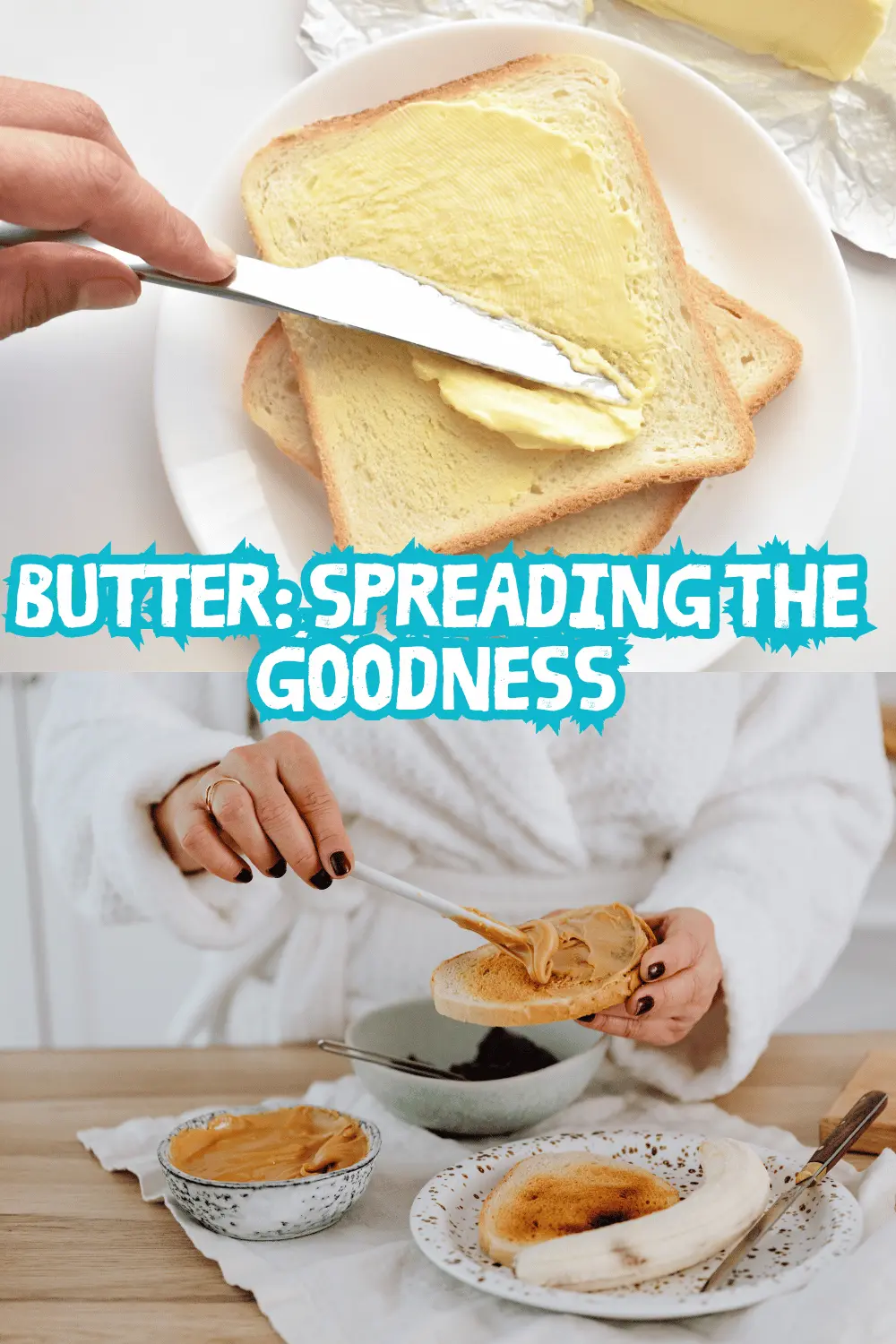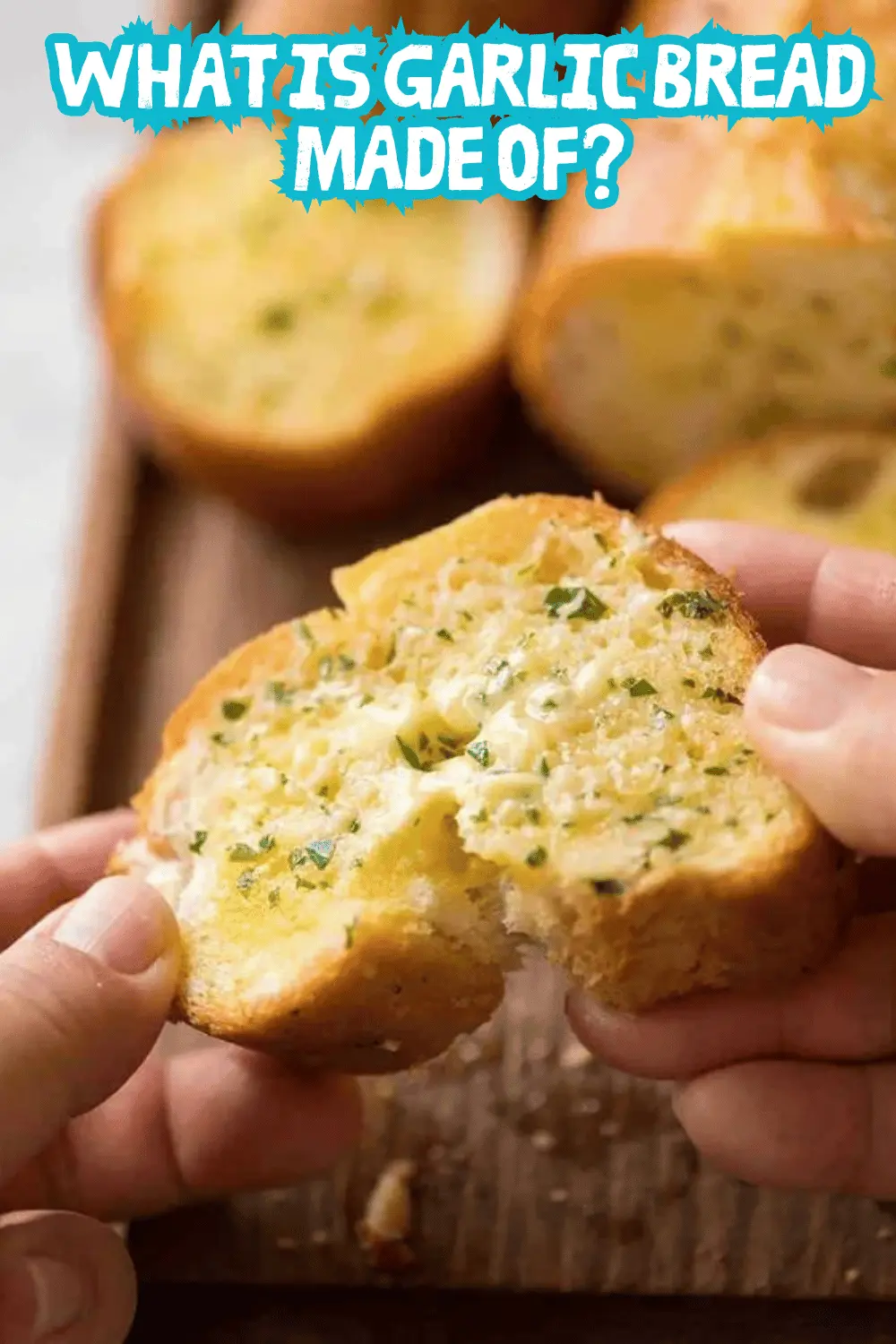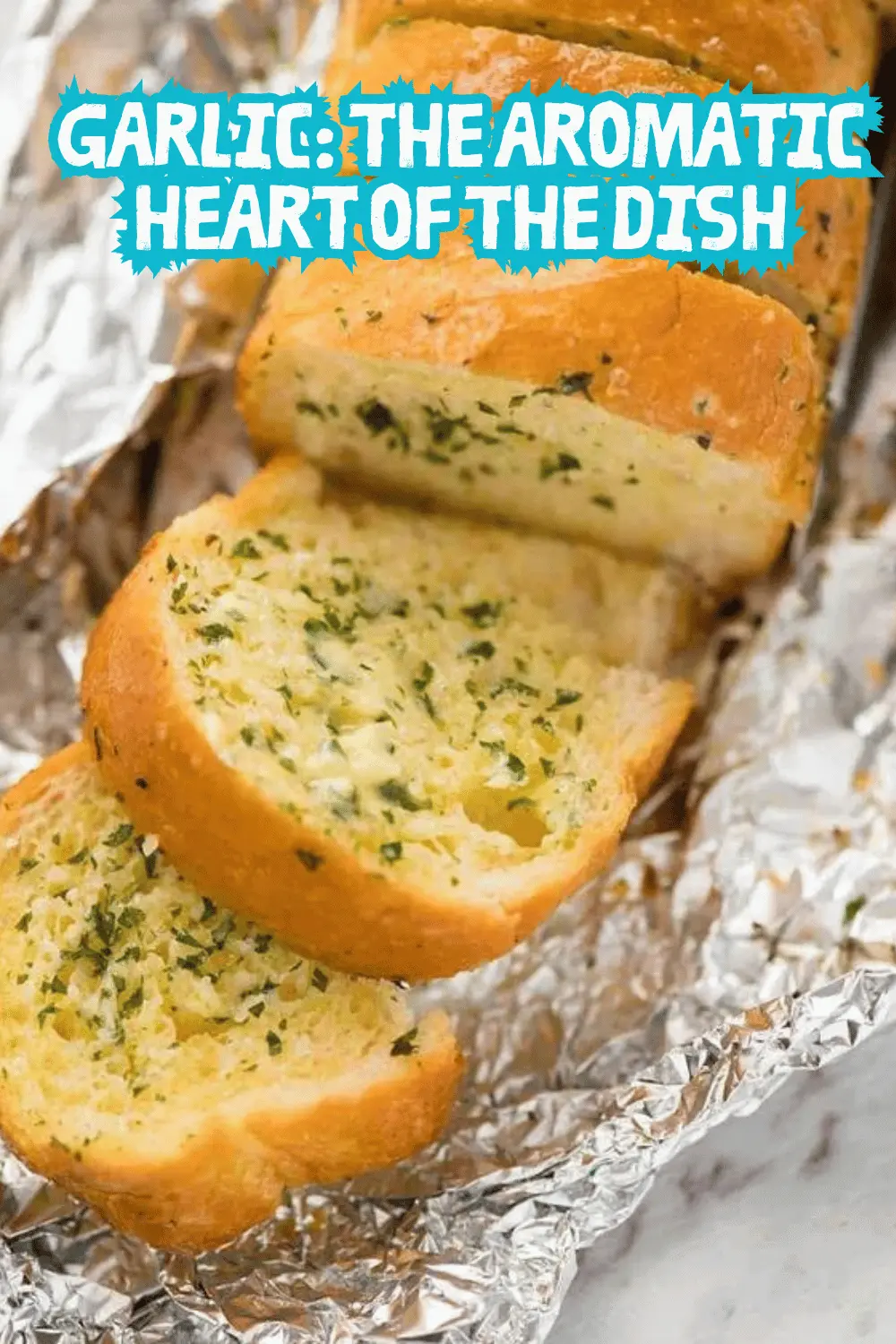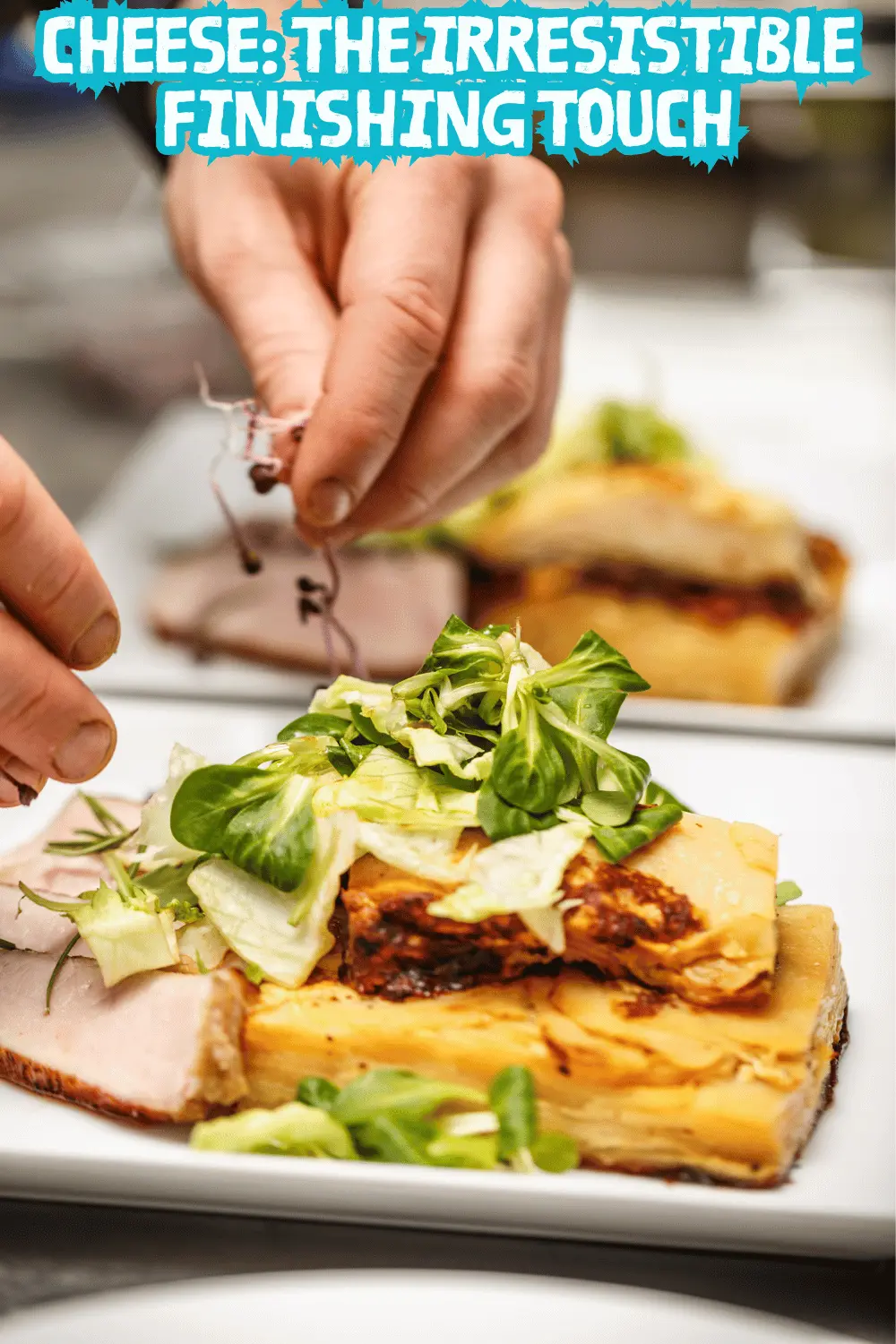ADVERTISEMENT
Garlic bread is a beloved side dish that combines the aromatic flavors of garlic with the comforting texture of bread. This flavorful creation has captured the hearts and taste buds of people around the world. In this article, we’ll explore the essential ingredients that make up this delightful treat and uncover the secrets behind its irresistible taste.
Key Takeaways
- Garlic bread is a classic side dish that features the savory taste of garlic and the comforting texture of bread.
- The core ingredients in garlic bread are bread, garlic, and butter, with additional herbs and seasonings often added to enhance the flavor.
- Garlic bread can be made using various types of bread, including baguettes, Italian bread, or even dinner rolls, depending on personal preference.
- The type of garlic used, the preparation method, and the specific blend of herbs and spices can all contribute to the unique flavor profile of garlic bread.
- Garlic bread is a versatile dish that can be enjoyed as a side, appetizer, or even as a part of a main meal.
Unlocking the Secrets of Garlic Bread
Garlic bread has long been a beloved staple in many cuisines, captivating taste buds with its irresistible combination of warm, crusty bread and the aromatic, savory flavors of garlic. This classic dish has evolved over time, with various cultures and regions putting their own unique spin on the recipe. In this section, we’ll delve into the history and evolution of garlic bread, uncovering the key elements that make it such a cherished culinary delight.
Exploring the Beloved Flavor Combination
The allure of garlic bread lies in the harmonious blend of its ingredients. The crusty exterior of the bread provides a satisfying texture, while the interior soaks up the rich, buttery goodness infused with the pungent aroma of freshly minced garlic. This flavor profile creates a mouthwatering sensation that is hard to resist, making garlic bread a perennial favorite among food lovers.
The origins of garlic bread can be traced back to ancient civilizations, where the use of garlic and bread as staple foods was widespread. Over the centuries, the recipe has evolved, with different cultures and regions adding their own unique twists and variations. From the classic Italian bruschetta to the French pain à l’ail, the versatility of garlic bread has allowed it to become a global phenomenon.
| Garlic Bread Variations | Key Ingredients |
|---|---|
| Italian Bruschetta | Toasted bread, garlic, olive oil, tomatoes, basil |
| French Pain à l’ail | Baguette, garlic, butter, parsley |
| American Garlic Bread | Bread, garlic, butter, parmesan cheese |
Whether it’s served as a side dish, an appetizer, or a simple snack, garlic bread has the power to bring people together and create lasting memories. Its enduring popularity is a testament to the universal appeal of this flavor-packed delicacy.
The Essential Ingredients
At the heart of every mouthwatering garlic bread lies a carefully curated selection of essential ingredients. From the foundation of the bread itself to the flavorful toppings and seasonings, each component plays a crucial role in creating the perfect balance of tastes and textures. Let’s explore the key ingredients that come together to make garlic bread the irresistible dish it is.
Bread forms the base of garlic bread, providing the sturdy foundation for the other flavors to build upon. The type of bread used can vary, but commonly, a crusty French or Italian loaf works best, as it can soak up the butter and garlic while maintaining a satisfying texture.
Next, butter is the essential ingredient that helps to bind the garlic and herbs to the bread. The butter not only adds a rich, creamy flavor but also helps to create a beautifully golden-brown crust when baked.
Of course, the star of the show is garlic itself. Fresh, fragrant garlic is minced or crushed and mixed into the butter to create the signature garlic flavor that garlic bread is known for. The amount of garlic used can vary depending on personal preference, from a subtle hint to a bold, robust taste.
Rounding out the essential ingredients are herbs and spices. Herbs like parsley, oregano, or basil can be added to the butter mixture, providing a fresh, herbal note that complements the garlic perfectly. Spices like black pepper or red pepper flakes can also be incorporated to add a touch of heat and complexity to the dish.
With these essential ingredients in hand, the stage is set for creating the perfect garlic bread that will have your taste buds dancing with delight.
What is garlic bread made of?
ADVERTISEMENT
Garlic bread is a beloved side dish that brings together a delightful fusion of simple, yet flavorful ingredients. From the foundation of soft, pillowy bread to the aromatic punch of garlic, each component plays a vital role in creating the perfect balance of flavors and textures.
Breaking Down the Key Components
At the heart of garlic bread are a few key ingredients that work together harmoniously:
- Bread: The base of garlic bread is typically a sturdy, crusty loaf or baguette, providing the foundation for the other flavors to shine.
- Garlic: The star of the show, garlic lends its pungent, savory aroma and taste to the dish, elevating the overall flavor profile.
- Butter: Melted butter acts as the binder, helping the garlic and herbs adhere to the bread and adding a rich, creamy texture.
- Herbs and Spices: Aromatic herbs like parsley, oregano, or basil, and a touch of spices like paprika or crushed red pepper, further enhance the depth of flavor.
| Ingredient | Purpose |
|---|---|
| Bread | Provides the foundation for the dish |
| Garlic | Adds the signature aromatic and savory flavor |
| Butter | Binds the ingredients and adds a rich, creamy texture |
| Herbs and Spices | Enhance the depth of flavor and provide additional complexity |
“The secret to irresistible garlic bread lies in the careful balance of these key components, each playing a vital role in creating a mouthwatering masterpiece.”
Bread: The Foundation of Garlic Bread
When it comes to garlic bread, the foundation of the dish is, without a doubt, the bread itself. The type of bread used can greatly impact the overall texture and flavor of the final product. Whether it’s a crusty, artisanal loaf or a soft, fluffy sandwich bread, the bread serves as the canvas for the delectable garlic and butter mixture.
The bread’s texture plays a crucial role in shaping the experience of eating garlic bread. A crusty exterior provides a satisfying crunch, while a soft, pillowy interior offers a comforting, melt-in-your-mouth sensation. The interplay between the two textures is what makes garlic bread so irresistible.
Soft, fresh bread can soak up the garlic-infused butter, creating a rich, indulgent flavor profile. On the other hand, a heartier, crustier bread can stand up to the strong garlic flavor, providing a sturdy foundation for the dish. The choice of bread ultimately comes down to personal preference and the desired eating experience.
| Bread Type | Texture | Flavor Impact |
|---|---|---|
| Crusty Artisanal Loaf | Crunchy exterior, soft interior | Robust garlic flavor, balanced by the bread’s texture |
| Soft Sandwich Bread | Soft and pillowy | Garlic and butter flavors are more prominent, with a luxurious mouthfeel |
Regardless of the bread choice, the foundation of garlic bread is essential in creating the perfect balance of flavors and textures that make this dish so beloved. The bread serves as the base, allowing the garlic, butter, and other ingredients to shine in delicious harmony.
Garlic: The Aromatic Heart of the Dish
At the core of every delectable garlic bread recipe lies the star ingredient: garlic. This pungent, aromatic vegetable is the foundation of the dish, imparting a rich, savory flavor that sets garlic bread apart from the rest. In this section, we’ll explore the diverse types of garlic and how they can impact the overall taste and character of the final product.
Understanding the Different Types of Garlic
Garlic comes in a variety of forms, each with its own unique flavor profile and culinary applications. From the robust and spicy hardneck varieties to the milder softneck types, the type of garlic used can significantly influence the aroma and flavor of your garlic bread.
- Hardneck Garlic: Known for its intense, pungent flavor and complex notes, hardneck garlic is a popular choice for savory dishes like garlic bread. Varieties such as Rocambole and Porcelain are prized for their bold, garlicky taste.
- Softneck Garlic: Softer in texture and milder in flavor, softneck garlic varieties like Silverskin and Artichoke offer a more subtle, versatile taste that can be well-suited for those seeking a more balanced garlic bread experience.
The type of garlic you choose can significantly impact the overall aroma and flavor of your garlic bread. Experiment with different varieties to discover your personal preference and create a garlic bread that truly tantalizes the senses.
Butter: Spreading the Goodness
When it comes to the art of garlic bread, butter is undoubtedly the unsung hero. This rich, creamy ingredient is the foundation that allows the flavors of garlic and other seasonings to truly shine.
Whether it’s melted and spread over the surface of the bread or mixed directly into the garlic and herb mixture, butter is the secret to achieving that signature texture and richness that makes garlic bread so irresistible.
The type of butter used can also greatly impact the end result. Unsalted butter allows for a more versatile flavor profile, while salted butter can provide a subtle savory contrast. Some bakers even opt for a blend of the two, creating a harmonious balance of flavors.
Butter’s Role in Garlic Bread
- Provides a rich, creamy base for the other ingredients
- Helps to create the signature texture and mouthfeel
- Enhances the richness and indulgence of the dish
- Acts as a delivery system for the garlic and other seasonings
| Butter Type | Impact on Garlic Bread |
|---|---|
| Unsalted Butter | Allows for a more versatile flavor profile |
| Salted Butter | Provides a subtle savory contrast |
| Blend of Unsalted and Salted Butter | Creates a harmonious balance of flavors |
Regardless of the specific butter used, it remains a critical component in the creation of the perfect garlic bread. Its ability to enhance the texture, richness, and overall flavor profile is truly unparalleled.
Herbs and Spices: Elevated Flavors
While garlic may be the star of the show, the supporting cast of herbs and spices plays a crucial role in elevating the overall flavor profile of garlic bread. From fragrant rosemary and thyme to bold, peppery notes, the right combination of seasonings can transform a simple dish into a culinary masterpiece.
Herbs and spices are the unsung heroes that add depth, complexity, and balance to the classic garlic bread recipe. Whether it’s the earthy aroma of dried oregano, the warm, woody notes of ground cumin, or the subtle sweetness of paprika, these flavor-packed ingredients can take your garlic bread from ordinary to extraordinary.
To create a truly memorable garlic bread, consider incorporating a variety of herbs and spices. Here are some of the most popular and versatile options:
- Rosemary – Fragrant and piney, rosemary pairs beautifully with garlic and adds a touch of Mediterranean flair.
- Thyme – With its herbaceous, slightly minty flavor, thyme complements the richness of garlic bread perfectly.
- Basil – Fresh, peppery basil can brighten up the flavors and add a pop of color to your garlic bread.
- Red pepper flakes – A sprinkle of these fiery flakes can add a delightful kick of heat to your garlic bread.
- Paprika – Smoked or sweet, paprika can lend a touch of warmth and depth to your garlic bread seasoning.
By experimenting with different combinations of herbs and spices, you can create a garlic bread that truly reflects your personal taste preferences and culinary style. So, don’t be afraid to get creative and let your taste buds lead the way!
Cheese: The Irresistible Finishing Touch
For many, the addition of cheese to garlic bread takes the dish to new heights of deliciousness. The nutty, salty goodness of Parmesan cheese is a classic choice, but garlic bread can also be elevated with other varieties, such as mozzarella or cheddar. In this section, we’ll explore the role cheese plays in enhancing the overall flavor and texture of garlic bread.
Parmesan and Beyond
Parmesan cheese is a beloved topping for garlic bread, adding a savory and umami-rich flavor that complements the garlic and butter perfectly. However, garlic bread can also be enjoyed with a variety of other cheeses, each offering its own unique toppings and flavor profile.
- Mozzarella: The classic melty cheese that creates a stringy, gooey texture when baked on top of garlic bread.
- Cheddar: A sharp and tangy cheese that can add a bold flavor to garlic bread.
- Feta: The salty, crumbly texture of feta cheese can provide a nice contrast to the soft garlic bread.
- Gouda: A creamy, buttery cheese that can melt beautifully on top of garlic bread.
Regardless of the cheese you choose, the melted, gooey topping creates an irresistible flavor and texture that takes garlic bread to a whole new level of deliciousness.
| Cheese Type | Flavor Profile | Texture |
|---|---|---|
| Parmesan | Savory, umami-rich | Hard, grated |
| Mozzarella | Mild, creamy | Soft, melty |
| Cheddar | Sharp, tangy | Firm, sliceable |
| Feta | Salty, crumbly | Crumbly, spreadable |
| Gouda | Buttery, creamy | Soft, melty |
Variations and Regional Twists
While the classic garlic bread may be a universally beloved side dish, its versatility allows for countless regional interpretations and unique variations. From the Italian-inspired version with a drizzle of olive oil to the Cajun-style garlic bread with a kick of spice, the possibilities for this delectable treat are truly endless.
For the Mediterranean palate, a Greek-style garlic bread might feature feta cheese and oregano, while a Spanish-inspired rendition could include paprika and Manchego cheese. Across the pond, the British might enjoy a cheddar-topped garlic bread or one infused with Worcestershire sauce.
In the American South, Cajun and Creole-style garlic bread bring a bold and spicy twist, incorporating cayenne pepper, Creole seasoning, and perhaps even a hint of Cajun sausage. Meanwhile, on the West Coast, California-style garlic bread might showcase fresh herbs, sun-dried tomatoes, and a sprinkle of Parmesan cheese.
No matter where in the world you find yourself, the humble garlic bread has the remarkable ability to take on the flavors and traditions of the local cuisine. From pesto-infused versions to cheesy garlic knots, the possibilities for this versatile side dish are as diverse as the regions and cultures that have embraced it.
Conclusion
The magic of garlic bread lies in the perfect harmony of its essential ingredients. From the foundation of the bread to the aromatic garlic, rich butter, and flavorful herbs and spices, each component plays a crucial role in creating the irresistible taste and texture that has made garlic bread a beloved side dish around the world.
Whether you prefer a classic version or a unique regional twist, the secrets to making the perfect garlic bread are now at your fingertips. Mastering the art of preparing this dish, with the right balance of ingredients and flavors, will allow you to indulge in the pure enjoyment of this timeless culinary delight.
With this comprehensive understanding of the garlic bread recipe and its key elements, you can confidently create your own versions, experimenting with different variations and personalizing the dish to suit your unique tastes. Embrace the versatility of garlic bread and savor the pleasure it brings to any meal or gathering.
FAQ
What is garlic bread made of?
What are the different types of garlic used in garlic bread?
How is garlic bread prepared?
What are some unique variations of garlic bread?
ADVERTISEMENT





